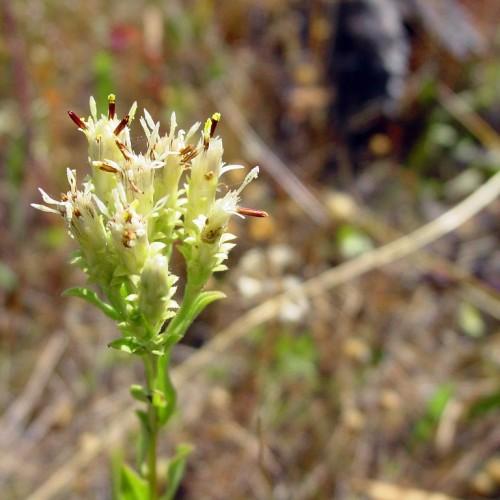
Narrow Leaved Owl Clover
Castilleja attenuata
Also Known As - Attenuate Indian PaintbrushWatering:
Minimal
Hardiness Zone:
Sun:
full sun,part shade
Leaf:
Yes
Growth Rate:
Low
Drought Tolerant:
Yes
Salt Tolerant:
Yes
Thorny:
Yes
Invasive:
Yes
watering
Narrow Leaved Owl Clover (Castilleja attenuata) is a native plant to dry climates like northern California and Nevada. This species of plant prefers well-drained soil and partial shade. This plant should be watered about once a week during its growing season, from May through September. It can tolerate some drought, so it is important to water only when the soil is dry and during periods of hotter weather than usual. When watering, make sure to wet the soil to a depth of 1 to 2 inches. In the cooler months, it should be watered less frequently, only when it is noticeably dry. If the soil is consistently wet, it can lead to root rot and the death of your plant.
sunlight
Narrow Leaved Owl Clover (Castilleja attenuata) enjoys full sun for the majority of the day, as long as intensity levels are moderate. The plant species should receive several hours of direct sunlight, preferably early in the morning or late in the afternoon, and then filtered or indirect light for the remainder of the day. The total hours of sun exposure should add up to at least 6-8 hours per day for optimal growth and flowering. This species thrives in hot climates but also does well in cooler climates if kept in a sheltered spot.
pruning
Narrow Leaved Owl Clover should be pruned lightly in late winter or early spring. Pruning should be limited to removing damaged or dead stems. It should also be pruned to encourage bushy growth and to prevent the plants from becoming too woody. Generally, each stem should be pruned back by 1-third to 1-half of its length. This will help promote new healthy growth and prevent the plant from becoming too leggy. Also, at the end of the flowering season, prune away any dead or damaged flowers or leaves to allow new growth to form. This will help to keep the plant tidy and promote an abundant bloom the following season.
